Variable Durometer Tube or Traditional Tubing?
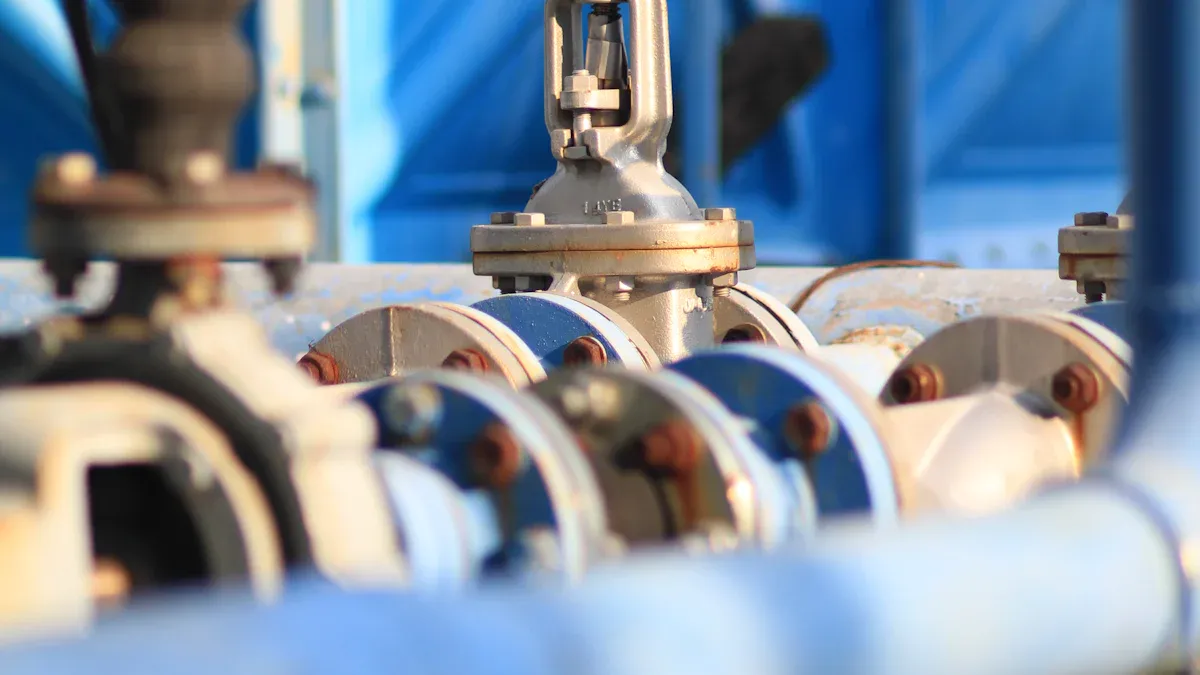
Tubing plays a crucial role in industries ranging from healthcare to manufacturing. Variable durometer tubes, a cutting-edge innovation, differ from traditional tubing in their ability to combine flexibility and durability. These unique properties make them indispensable in applications like medical device manufacturing, where precision and performance are paramount. PT&C™ has revolutionized this space by offering high-quality solutions that enhance both functionality and safety. Their advanced designs cater to specialized needs, ensuring superior results for demanding applications.
Key Takeaways
Variable durometer tubes are both flexible and firm. They work well for special uses like medical tools.
Their smooth hardness change helps them bend easily. This also lowers the chance of bending too much during use.
Regular tubing is great for everyday jobs. It works well and costs less for things like moving liquids.
Variable durometer tubes can be customized. This lets makers create tubes for specific needs in different industries.
Picking the right tube depends on what you need. Variable durometer tubes are best for special jobs, while regular tubes are good for common tasks.
What Are Variable Durometer Tubes?
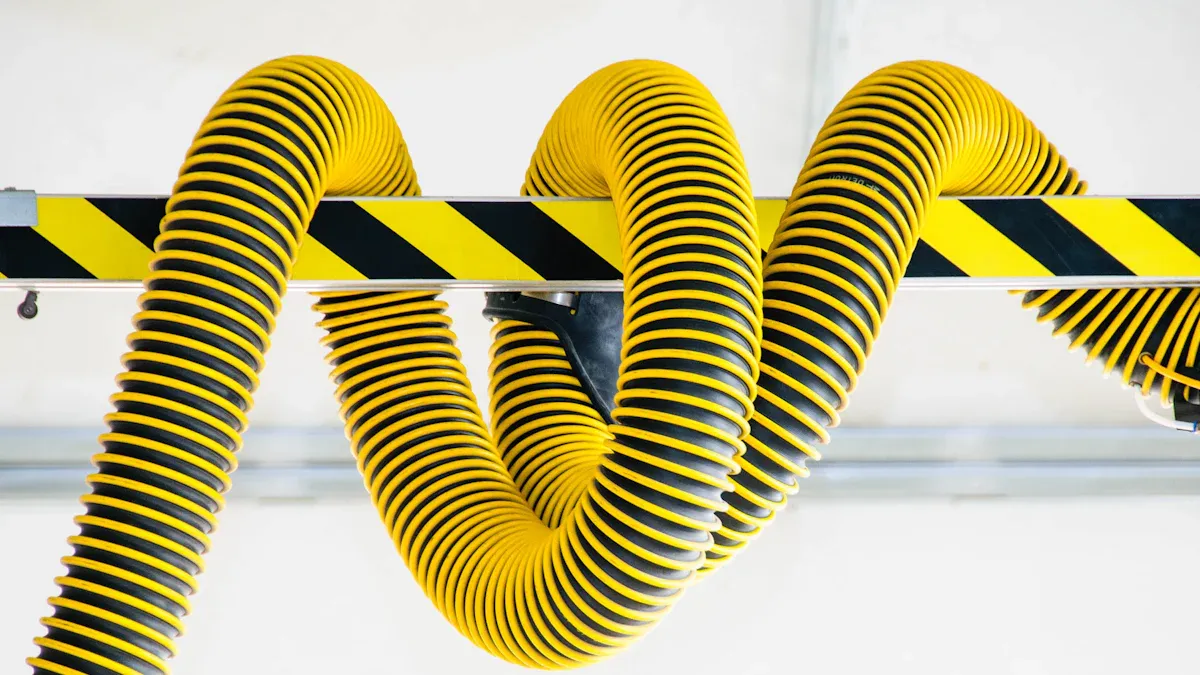
Definition and Features
Variable durometer tubes represent a breakthrough in tubing technology, offering a seamless transition in hardness along their length. This design enables the tubing to combine flexibility and rigidity, making it ideal for applications requiring precise control and durability. Unlike traditional tubing, which maintains a uniform hardness, variable durometer tubes adapt to specific performance needs. For instance, they feature a soft distal end for flexibility and a rigid proximal end for structural support.
These tubes are commonly manufactured using advanced materials such as Nylon-Pebax® and Nylon-Vestamid®, ensuring high performance in demanding environments. Their technical specifications highlight their precision, as shown in the table below:
Specification | Variable Durometer Tubes |
|---|---|
Wall Tolerance | ±0.00008" (±2pm) |
Inside Diameter | 0.01" - 0.11" (0.3mm - 2.8mm) |
Materials | Nylon-Pebax®, Nylon-Vestamid®, etc. |
Option | Variable durometer |
These features make variable durometer tubes indispensable in medical device manufacturing, particularly in catheters and other minimally invasive tools.
Manufacturing Process
The production of variable durometer tubes involves cutting-edge techniques that ensure precision and consistency. Manufacturers utilize wire-arc directed energy deposition (DED) with optimized parameters such as wire feed speed (WFS) and travel speed (TS). An 80-second delay between layers enhances mechanical properties, as demonstrated by research studies. Mechanical testing, conducted using miniature tensile samples, adheres to ASTM E8 standards to ensure strength and reliability.
This process results in hollow tubes with superior strength and ductility, addressing the needs of high-performance applications. While certain regions may exhibit anisotropy and hardness variations, the overall structural integrity remains uncompromised.
Advantages of Gradual Hardness Transition
The gradual hardness transition in variable durometer tubes offers several advantages over traditional tubing. This feature optimizes flexibility and pushability, ensuring smooth navigation through complex pathways, such as those encountered in medical procedures. Enhanced kink resistance prevents performance failures, while improved torque control allows precise maneuverability during catheter use.
These benefits make variable durometer tubes particularly suitable for medical applications like coronary stent delivery systems and neurovascular interventional catheters. Their ability to adapt to diverse requirements ensures reliable performance in critical scenarios.
What Are Traditional Tubes?
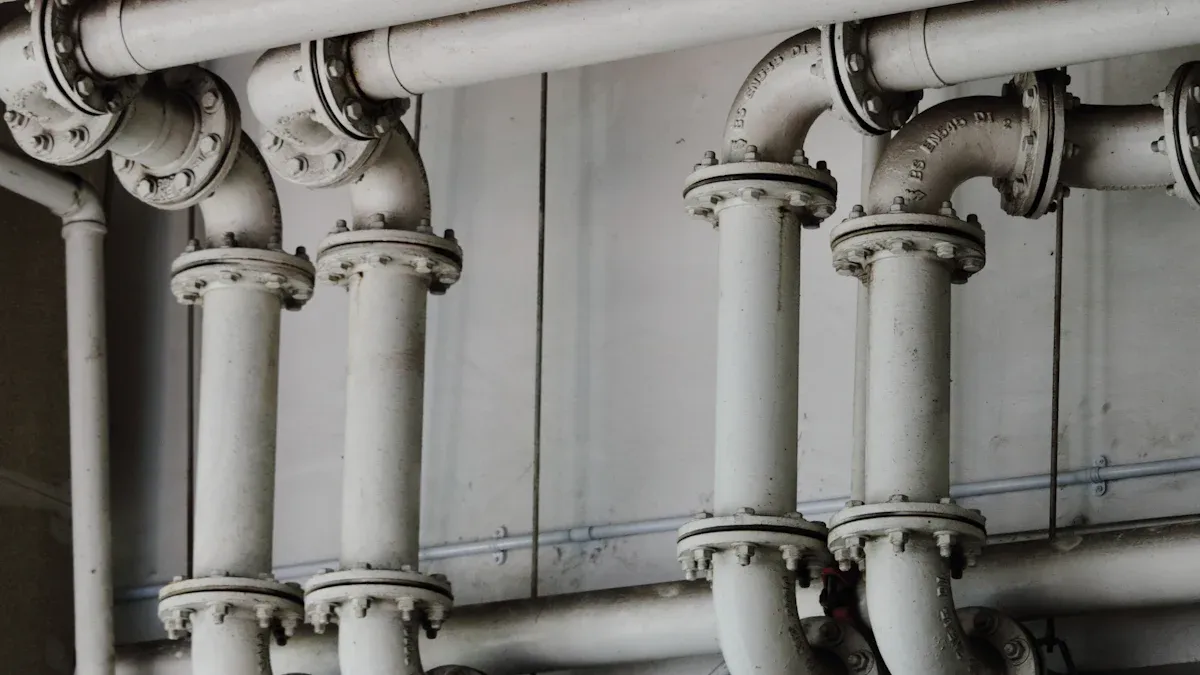
Definition and Characteristics
Traditional tubes are widely used in industries for their uniform structure and consistent performance. Unlike variable durometer tubing, traditional tubes maintain a single hardness level throughout their length. This characteristic makes them suitable for applications requiring durability and reliability under consistent conditions.
Traditional tubing characteristics include high pressure resistance, corrosion resistance, and mechanical strength. These features make them indispensable in industries like oil and gas, automotive, and aerospace. For example, seamless tubes in the oil and gas sector provide critical fluid transport under high pressure. Similarly, high-strength titanium tubes in aerospace applications ensure safety and efficiency in hydraulic systems and fuel lines.
Industry/Application | Tube Type | Key Characteristics | Performance Benchmarks |
|---|---|---|---|
Oil & Gas | Seamless tubes | High pressure resistance, better mechanical properties | Essential for critical fluid transport |
Automotive | Aluminum and composite | Lightweight, high-performance for fuel efficiency | Required for EV structures and cooling systems |
Aerospace | High-strength titanium | Required for fuel lines, hydraulic systems, and heat exchangers | Critical for aerospace applications |
Common Materials Used
Traditional tubing is manufactured using materials tailored to specific applications. Austenitic 304 and 316 stainless steels are popular for their corrosion resistance and biocompatibility, making them ideal for medical and chemical processing applications. Aluminum and copper excel in heat transfer due to their thermal conductivity, while PTFE offers high chemical resistance and temperature tolerance.
Material | Key Benefits | Applications | Limitations |
|---|---|---|---|
Stainless Steel | Corrosion resistance, high strength | Medical, hydraulic systems | Heavier than alternatives |
Aluminum | Lightweight, excellent thermal conductivity | Automotive, aerospace | Loses strength at elevated temperatures |
PTFE | High chemical resistance, withstands high temperatures | Industrial, chemical processing | Costlier, not easily weldable |
Applications in General Industries
Traditional tubing serves a broad range of industries due to its versatility. In the automotive sector, aluminum and composite tubes enhance fuel efficiency and structural integrity. The oil and gas industry relies on seamless tubes for fluid transport under extreme conditions. Renewable energy applications use lightweight, high-strength tubing for structural support and energy storage. These examples highlight the adaptability of traditional tubing across diverse industrial needs.
Key Differences Between Variable Durometer Tubes and Traditional Tubing
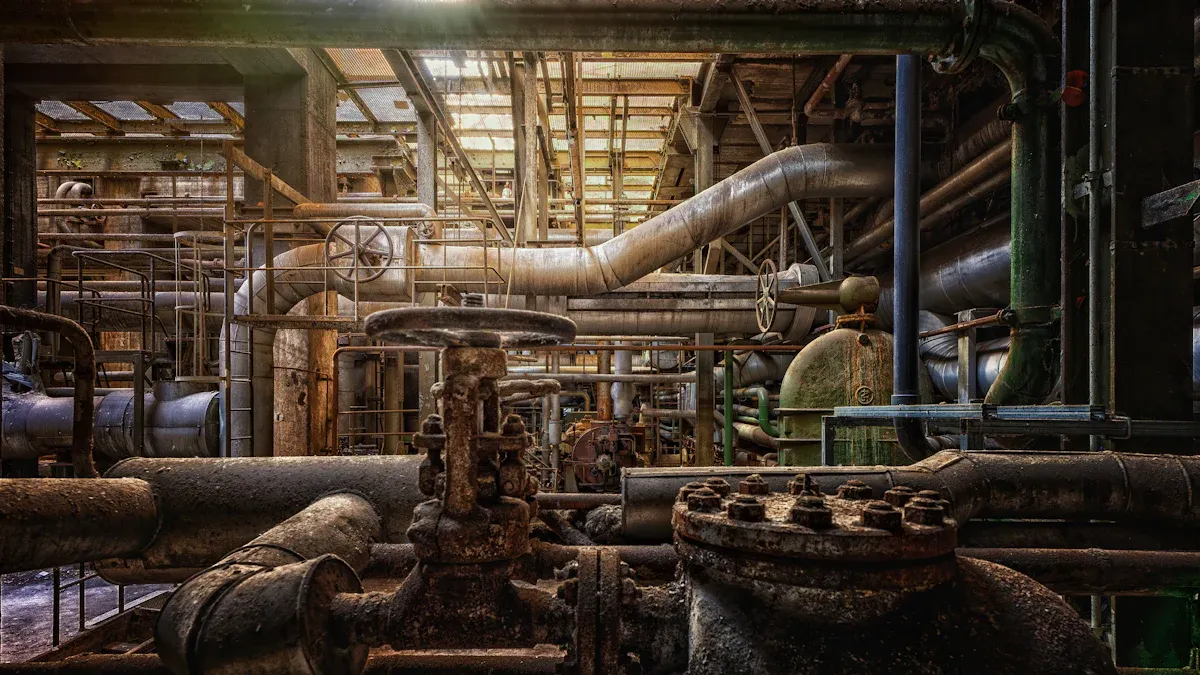
Performance and Flexibility
Variable durometer tubes excel in applications requiring a balance between flexibility and rigidity. Their gradual hardness transition allows smooth navigation through complex pathways, making them ideal for medical procedures involving catheters and stent delivery systems. This design enhances pushability and torque control, ensuring precise maneuverability in minimally invasive environments.
Traditional tubing, on the other hand, offers consistent performance due to its uniform hardness. While this characteristic suits applications requiring steady mechanical strength, it limits adaptability in scenarios demanding dynamic flexibility. Industries like automotive and aerospace benefit from traditional tubing's reliability under predictable conditions, but it lacks the versatility needed for specialized tasks.
Tip: PT&C™'s variable durometer tube provides unmatched flexibility and structural support, making it the preferred choice for high-performance applications.
Durability and Structural Integrity
Durability assessments reveal significant differences between the two tubing types. Variable durometer tubes undergo advanced structural integrity analysis, optimizing their microstructure and manufacturing processes. This ensures resistance to creep-fatigue damage caused by cyclic stress and elevated temperatures. Their design minimizes microscopic cracking events, enhancing longevity and reliability in demanding environments.
Traditional tubing, while durable, faces challenges under extreme conditions. Excessive temperatures and prolonged service hours can lead to material degradation, impacting structural integrity. Stop-start operations in industrial settings further contribute to damage accumulation.
Aspect | Description |
|---|---|
Excessive Tube Temperatures | Can result from poor design and material selection, affecting durability and structural integrity. |
Service Hours | The number of service hours influences creep-fatigue damage, impacting the longevity of the tubing. |
Stop/Starts | Characteristics of stop/starts can affect the accumulation of damage in variable durometer tubes. |
PT&C™ ensures its variable durometer tubing meets rigorous durability standards, making it a reliable choice for critical applications.
Cost Efficiency and Production Methods
Variable durometer tubes offer superior cost efficiency due to their innovative one-step extrusion process. This method reduces material waste and eliminates the need for bonding or welding different hardness segments, lowering production costs. PT&C™'s streamlined manufacturing approach ensures high-quality tubing at competitive prices, making it accessible for industries requiring precision and performance.
Traditional tubing, while economical for general applications, incurs higher costs in specialized scenarios. Processes like Steam Methane Reforming (SMR) highlight the limitations of traditional tubing in terms of operational efficiency and structural integrity at large sizes.
Aspect | Steam Methane Reforming (SMR) | Autothermal Reforming (ATR) |
|---|---|---|
Capital Cost Contribution | ~60% of SMR cost is from tubes and catalyst | Scales more economically to large capacities |
Operational Efficiency | Limited by structural integrity at large sizes | More thermally efficient but higher power demand |
Maximum Capacity | ~650,000 kg/d hydrogen production | Higher capacity achievable with multiple units |
PT&C™'s variable durometer tubing combines cost efficiency with advanced performance, making it a valuable investment for industries seeking innovation and reliability.
Suitability for Specialized vs. General Applications
Variable durometer tubes and traditional tubing cater to different application needs, with each excelling in specific scenarios. Understanding their suitability for specialized and general uses helps industries make informed decisions.
Specialized Applications
Variable durometer tubes are engineered for high-precision tasks, particularly in the medical field. Their ability to transition seamlessly between flexibility and rigidity makes them indispensable in minimally invasive procedures. For example, catheters and stent delivery systems benefit from the tubing's gradual hardness transition, which enhances maneuverability and structural support. This design ensures optimal performance in complex environments, such as navigating through intricate vascular pathways.
Industries requiring advanced customization also favor variable durometer tubes. Manufacturers can tailor these tubes to meet specific requirements, including variable inner and outer diameters, multi-lumen structures, and specialized coatings. These features make them ideal for applications like neurovascular interventions, where precision and reliability are critical.
General Applications
Traditional tubing remains the go-to choice for general industrial uses. Its uniform hardness and straightforward design provide consistent performance in applications where specialized features are unnecessary. Industries such as automotive, aerospace, and oil and gas rely on traditional tubing for tasks like fluid transport, structural support, and heat exchange.
For instance, seamless tubes in the oil and gas sector handle high-pressure fluid transport effectively. Similarly, aluminum and composite tubes in the automotive industry contribute to lightweight designs, improving fuel efficiency. These examples highlight the versatility of traditional tubing in meeting broad industrial demands.
Key Considerations
When selecting between variable durometer tubes and traditional tubing, industries must evaluate their specific needs. Specialized applications demand advanced features, such as flexibility, kink resistance, and torque control, which variable durometer tubes provide. In contrast, general applications prioritize durability, cost-effectiveness, and simplicity, making traditional tubing the preferred option.
Note: PT&C™ offers expert guidance to help industries choose the right tubing solution, ensuring optimal performance and cost efficiency.
Pros and Cons of Each Type
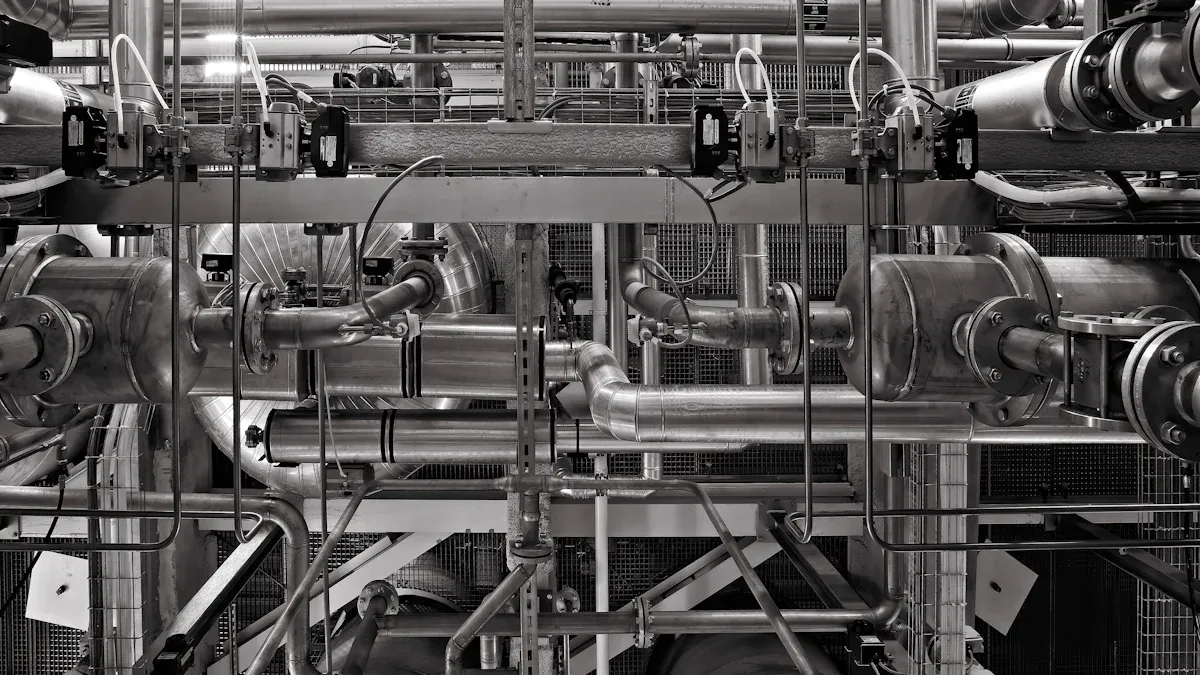
Benefits of Variable Durometer Tubes
Variable durometer tubes offer unmatched versatility and performance. Their gradual hardness transition enhances flexibility and pushability, making them ideal for applications requiring precise control. This design minimizes the risk of kink formation, ensuring smooth navigation through complex pathways. Enhanced torque control further improves maneuverability, especially in medical procedures involving catheters and stent delivery systems.
These tubes also excel in durability. Advanced manufacturing processes optimize their structural integrity, reducing the likelihood of material degradation under cyclic stress. Their one-step extrusion method eliminates the need for bonding or welding, lowering production costs and material waste. Customization options, such as variable diameters and specialized coatings, make them adaptable to diverse requirements.
Tip: Proper tube fitting installation ensures the tubing performs optimally, reducing safety concerns during use.
Drawbacks of Variable Durometer Tubes
While variable durometer tubes provide significant advantages, their specialized design limits their use in general industrial applications. Industries requiring uniform hardness and straightforward installation may find traditional tubing more suitable. Additionally, the advanced manufacturing techniques used for variable durometer tubes demand precise equipment and expertise, which may not be accessible to all manufacturers.
Benefits of Traditional Tubing
Traditional tubing remains a reliable choice for industries requiring consistent performance. Its uniform hardness simplifies tube fitting installation, reducing the risk of errors during setup. This characteristic makes it ideal for applications where durability and reliability are paramount, such as fluid transport in oil and gas or structural support in aerospace.
The wide range of materials available for traditional tubing ensures compatibility with various environments. Stainless steel offers corrosion resistance, while aluminum provides lightweight solutions for automotive and aerospace applications. PTFE excels in chemical processing due to its high temperature tolerance. These characteristics make traditional tubing versatile and cost-effective for general industrial use.
Note: Following installation best practices ensures safety and prevents issues like leaks during tube fitting connection.
Drawbacks of Traditional Tubing
Traditional tubing, while reliable for many general applications, presents several limitations that can impact its performance in specialized or demanding environments. One of the primary drawbacks is its uniform hardness, which restricts its adaptability. This rigidity makes it unsuitable for applications requiring a balance of flexibility and structural support, such as those found in minimally invasive medical procedures.
Material degradation is another concern. Traditional tubing, especially when exposed to extreme temperatures or corrosive environments, may experience wear over time. This degradation can compromise the tubing's structural integrity, leading to potential failures. For instance, in high-pressure systems, even minor weaknesses can result in a leak, posing operational challenges and increasing maintenance costs.
Safety concerns also arise with traditional tubing in certain scenarios. Its inability to withstand dynamic stress or cyclic loading can lead to unexpected failures, particularly in industries like aerospace or oil and gas. These failures not only disrupt operations but also pose significant risks to personnel and equipment. Ensuring safety in such environments often requires additional measures, such as frequent inspections or the use of protective coatings, which can increase operational costs.
Furthermore, traditional tubing lacks the advanced customization options available with newer technologies. Industries requiring precise specifications, such as variable diameters or specialized coatings, may find traditional tubing inadequate. This limitation reduces its effectiveness in applications where precision and performance are critical.
While traditional tubing remains a cost-effective solution for general industrial use, its limitations in flexibility, durability, and customization make it less suitable for specialized applications. Industries must carefully evaluate these factors to ensure optimal performance and safety.
Best Applications for Each Type
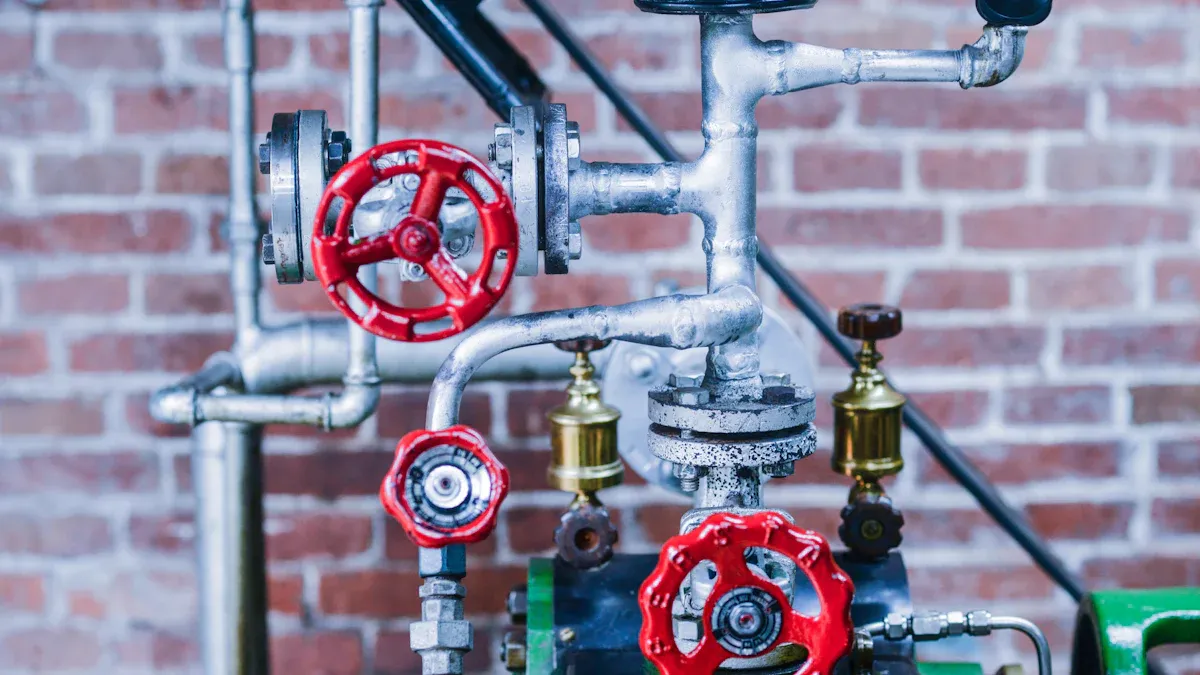
Ideal Uses for Variable Durometer Tubes
Variable durometer tubes are designed for specialized applications where precision, flexibility, and structural integrity are critical. Their unique ability to transition seamlessly between soft and rigid segments makes them indispensable in the medical field. These tubes are particularly effective in manufacturing catheters, stent delivery systems, and other minimally invasive devices. The gradual hardness transition ensures smooth navigation through complex anatomical pathways, enhancing both safety and performance during procedures.
In addition to their use in catheters, these tubes excel in neurovascular interventions. Their enhanced torque control allows surgeons to maneuver devices with precision, even in intricate vascular networks. Coronary stent delivery systems also benefit from the tubing's kink resistance, which minimizes the risk of procedural complications. Furthermore, the customizable features of variable durometer tubes, such as multi-lumen designs and specialized coatings, make them adaptable to a wide range of high-performance medical applications.
Beyond healthcare, industries requiring advanced fluid control and durability also rely on these tubes. For instance, aerospace and robotics sectors use them in systems where flexibility and structural support must coexist. PT&C™'s variable durometer tubing stands out in these scenarios, offering unparalleled reliability and customization options tailored to industry-specific needs.
Discover Variable Durometer Tubing
Explore the innovative features and customization options of PT&C™'s Variable Durometer Tubing for your medical applications.
Common Scenarios for Traditional Tubing
Traditional tubing remains a cornerstone in industries that prioritize durability and cost-effectiveness over specialized features. Its uniform hardness and straightforward design make it suitable for general applications where consistent performance is essential.
In clinical settings, traditional tubing plays a vital role in fluid delivery systems. Silicone tubing, for example, demonstrates consistent performance over time, ensuring accurate medication delivery. In contrast, PVC tubing, while cost-effective, may degrade, leading to inaccuracies. This highlights the importance of material selection in traditional tubing applications.
Other common scenarios include industrial fluid transport, where traditional tubing handles high-pressure environments effectively. Seamless tubes are widely used in the oil and gas sector for transporting critical fluids under extreme conditions. Similarly, aluminum tubing in the automotive industry contributes to lightweight designs, improving fuel efficiency and reducing emissions. These examples underscore the versatility of traditional tubing in meeting diverse operational requirements.
Industry-Specific Examples (e.g., Medical, Industrial)
Medical Applications
In the medical industry, variable durometer tubes have revolutionized device manufacturing. Catheters and stent delivery systems rely on their gradual hardness transition for optimal performance. Neurovascular interventional devices benefit from their enhanced torque control, which ensures precise navigation through delicate pathways. PT&C™'s tubing solutions, with their customizable features and medical-grade materials, set the standard for quality and reliability in this field.
Traditional tubing also finds applications in healthcare, particularly in fluid management systems. Silicone tubing is commonly used in infusion pumps due to its durability and biocompatibility. However, its performance can vary based on environmental factors, emphasizing the need for careful material selection.
Industrial Applications
In industrial settings, traditional tubing dominates due to its robustness and cost-efficiency. The oil and gas industry relies on seamless tubes for high-pressure fluid transport, while the automotive sector uses aluminum tubing to enhance vehicle performance. Aerospace applications demand high-strength titanium tubes for hydraulic systems and fuel lines, ensuring safety and efficiency.
Variable durometer tubes, though less common in general industries, are gaining traction in specialized sectors like robotics and aerospace. Their ability to combine flexibility with structural integrity makes them ideal for advanced fluid control systems and dynamic mechanical components.
Tip: PT&C™ offers expert guidance to help industries select the right tubing solution, ensuring optimal performance and cost efficiency across applications.
Variable durometer tubes and traditional tubing differ in flexibility, durability, and application scope. Variable durometer tubes excel in specialized tasks like manufacturing medical catheters, offering enhanced performance and safety. Traditional tubing remains reliable for general industrial use, prioritizing cost-efficiency and simplicity. Selecting the right tubing depends on specific requirements, including performance demands and budget constraints. PT&C™ provides tailored solutions, ensuring high-quality tubing for industries ranging from medical to aerospace. Their expertise guarantees optimal results for critical applications.
FAQ
What is the primary advantage of variable durometer tubing over traditional tubing?
Variable durometer tubing offers a seamless transition in hardness, combining flexibility and rigidity. This feature enhances performance in specialized applications, such as medical devices, where precise control and structural support are critical.
Can variable durometer tubing be customized for specific applications?
Yes, manufacturers can customize variable durometer tubing with options like multi-lumen designs, variable diameters, and specialized coatings. These features make it adaptable to diverse industries, including medical, aerospace, and robotics.
How does the manufacturing process of variable durometer tubing reduce costs?
The one-step extrusion process eliminates the need for bonding or welding different hardness segments. This innovation minimizes material waste and streamlines production, resulting in cost savings without compromising quality.
What industries benefit most from traditional tubing?
Traditional tubing serves industries like automotive, aerospace, and oil and gas. Its uniform hardness and durability make it ideal for general applications, such as fluid transport, structural support, and heat exchange systems.
Is variable durometer tubing suitable for high-pressure environments?
Yes, variable durometer tubing can handle high-pressure scenarios, especially in medical applications. Its advanced design ensures structural integrity and reliability, even under demanding conditions.
Tip: Consult PT&C™ for expert guidance on selecting the right tubing for your specific needs.
See Also
The Influence of Cyclic Life Testing on NiTi Tubing Durability
Finding the Most Cost-Effective Supplier for 2mm Nitinol Tubing
Evaluating Nitinol Tubing's Tensile Strength Against Stainless Steel
Selecting Optimal FEP Shrink Tubing for Class III Medical Devices
NiTi Tubes: Transforming the Future of Medical Device Technology
